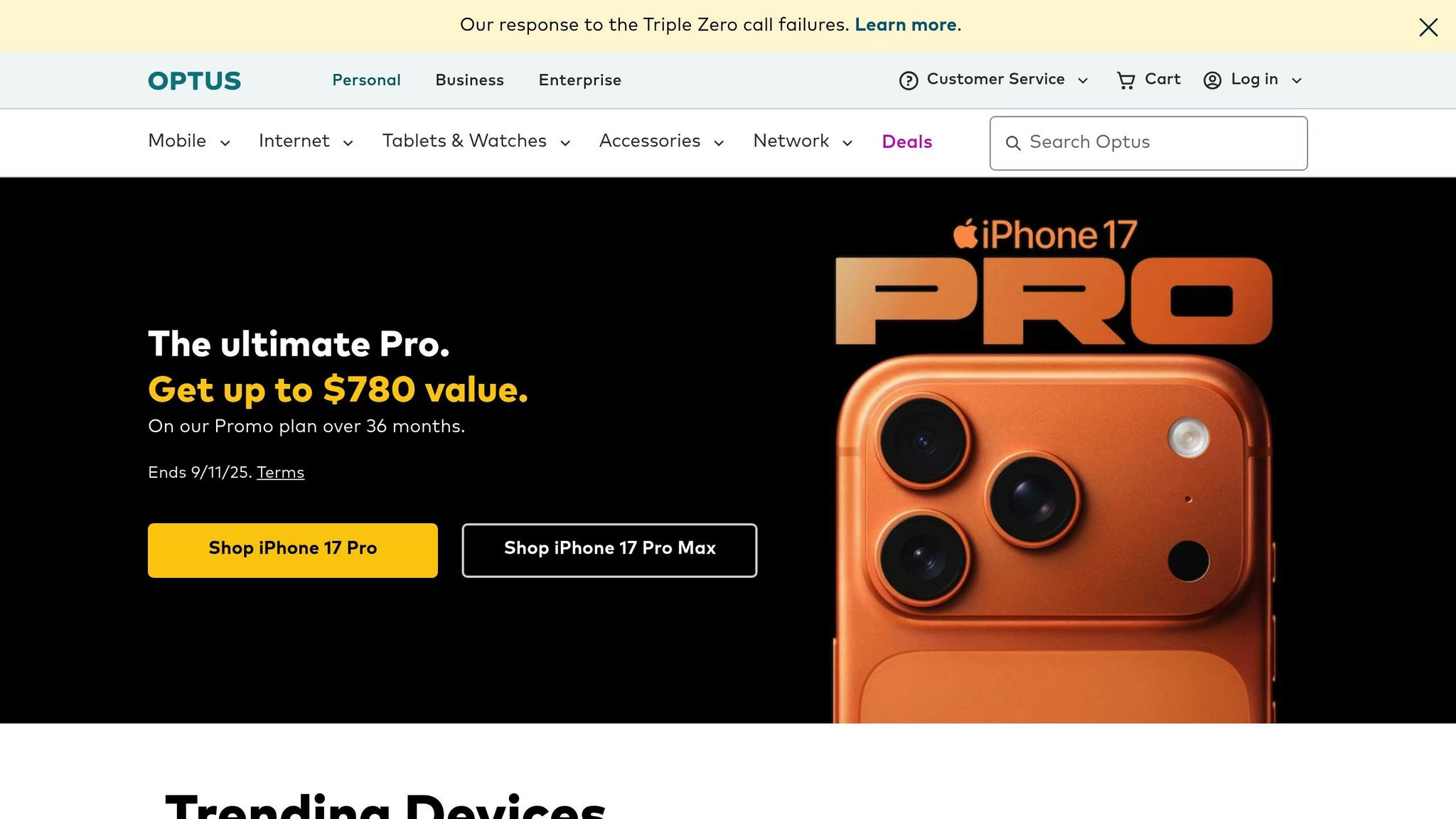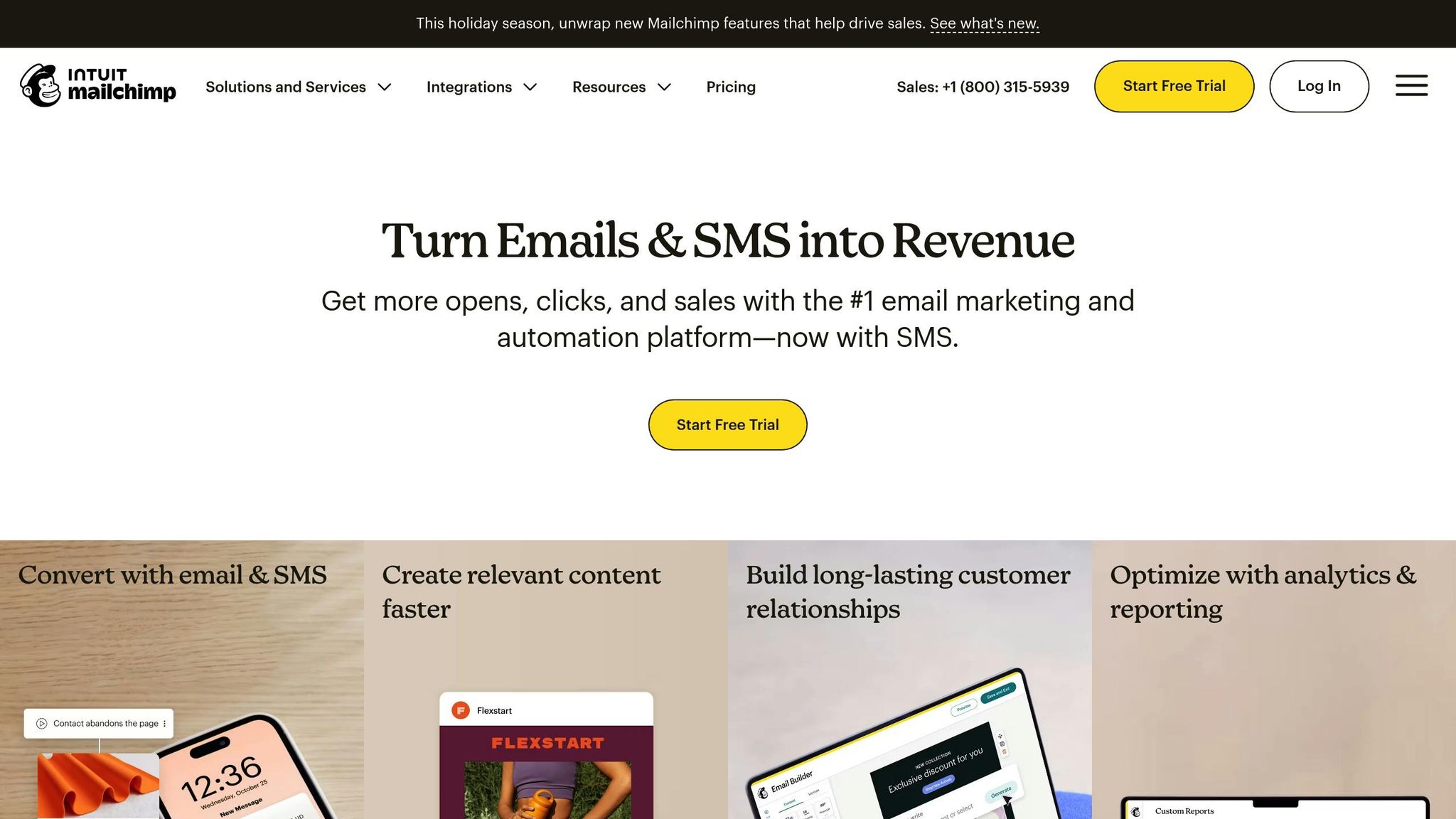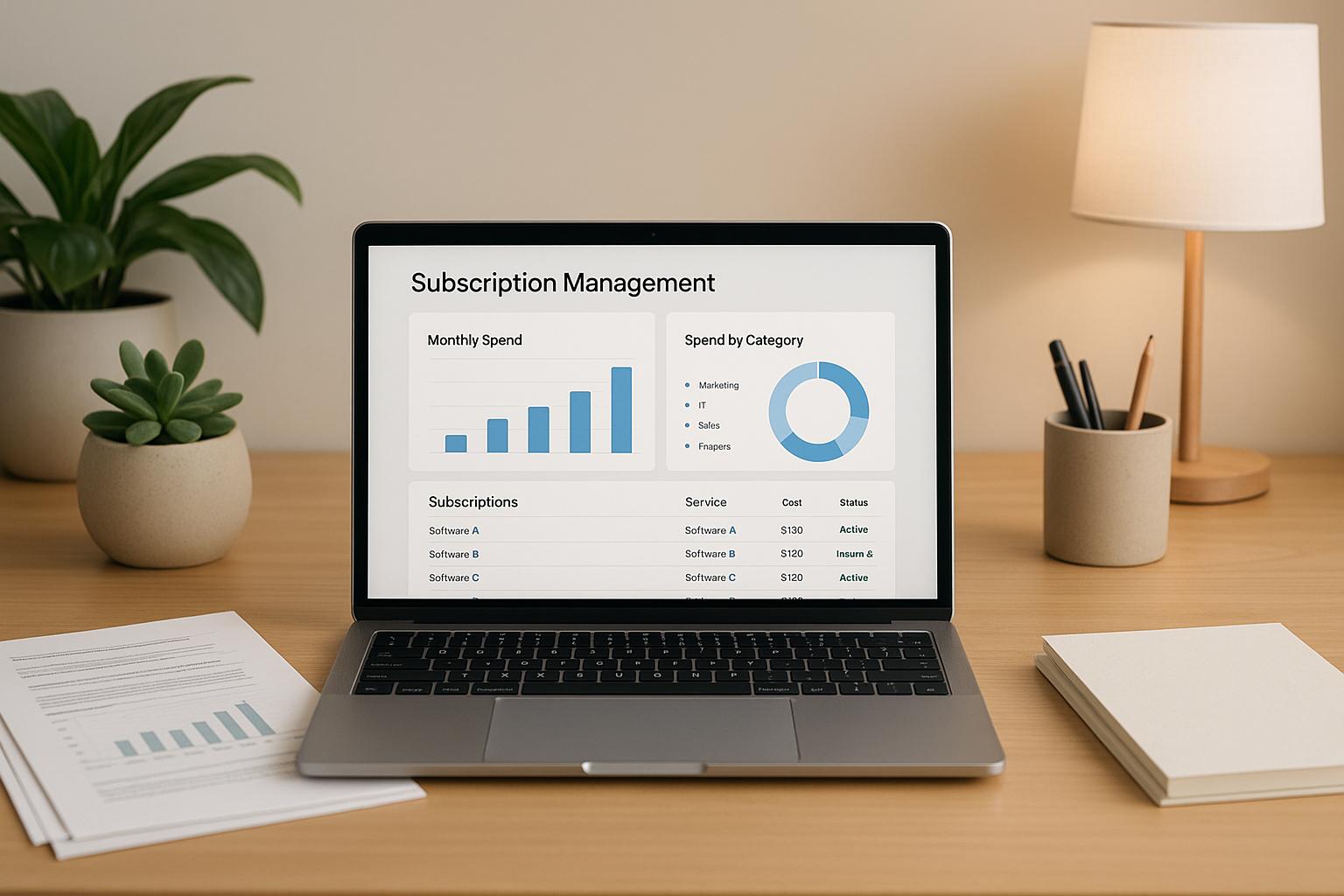Case Studies: Effective Breach Communication Strategies

When a data breach happens, how a company communicates can make or break its reputation. Mishandling communication can lead to lawsuits, lost customers, and regulatory fines. This article examines three real-world examples - T-Mobile, Optus, and Mailchimp - to highlight what works and what doesn’t in breach communication. Here’s the takeaway:
- T-Mobile (2021): Quick acknowledgment, direct customer updates, and free identity protection helped manage fallout but didn’t prevent reputational damage.
- Optus (2022): Immediate action and transparent updates showed accountability, but weak security led to severe public criticism.
- Mailchimp (2022-2023): Focused on insider threat prevention and timely alerts but struggled with repeated breaches undermining trust.
Key lessons for businesses:
- Act fast - delays worsen the damage.
- Be transparent - explain what happened and what’s being done.
- Support stakeholders - offer clear steps to protect themselves.
- Strengthen security - prevent breaches before they happen.
For growth-stage companies, investing in clear communication and solid security practices is not just smart - it’s necessary to protect trust and future growth.
Case Study: T-Mobile Data Breach
Overview of the T-Mobile Breach
In August 2021, T-Mobile experienced one of the largest data breaches in U.S. telecom history, impacting over 50 million people. The breach didn’t just affect current customers - it also exposed sensitive information belonging to former subscribers and even individuals who had only applied for service.
What made this breach particularly alarming was how it became public. A hacker advertised the stolen data for sale on an underground forum, forcing T-Mobile to respond immediately. The stolen information included highly sensitive personal details, putting millions at risk. Adding to the pressure was the company’s history with a prior breach, which intensified public scrutiny and raised questions about T-Mobile’s cybersecurity measures.
T-Mobile's Communication Strategy
Once the breach was publicly revealed, T-Mobile’s communication strategy became a critical part of its crisis response. The company acted quickly, confirming the breach and launching an internal investigation within hours of the hacker’s post.
Direct communication with affected individuals was a key element of their approach. T-Mobile sent clear, jargon-free emails and text messages to those impacted, explaining what data had been compromised and offering practical steps to safeguard personal information. This straightforward messaging helped customers understand the situation without overwhelming them with technical details.
T-Mobile also prioritized public transparency by issuing press releases and regularly updating its website with new developments. Instead of going silent after the initial announcement, the company maintained a steady flow of updates, which helped to rebuild some level of trust during a difficult time. Additionally, T-Mobile worked closely with regulatory authorities, including the Federal Communications Commission (FCC), and cooperated with law enforcement, ensuring compliance while keeping stakeholders informed.
To support affected customers, T-Mobile offered free identity theft protection and credit monitoring services. They also set up dedicated support channels to handle the influx of questions and concerns, demonstrating a commitment to customer care during the crisis.
Key Lessons Learned
The 2021 T-Mobile breach provides important takeaways for growth-stage companies developing their own incident response plans.
- Speed and transparency go hand in hand. T-Mobile’s swift acknowledgment of the breach, even with limited details, helped establish credibility and reduced the risk of misinformation spreading.
- Customer support is critical during a crisis. Companies should be prepared to scale up customer service and have agreements with identity protection services in place to activate when needed.
- Regulatory compliance demands ongoing updates. T-Mobile’s regular communication with the FCC and other authorities highlights the importance of staying engaged beyond the initial notification period. Companies must be ready to track and report new developments throughout the response process.
Another key takeaway is how past security issues can magnify the impact of a current breach. Businesses with strong cybersecurity records are better positioned to weather public scrutiny during a crisis. This emphasizes the need for proactive investment in cybersecurity measures, rather than treating them as an afterthought.
For growth-stage companies, T-Mobile’s response underscores the importance of clear communication and strong customer support in managing reputational risks during a breach. While the incident brought significant challenges, T-Mobile’s consistent messaging and customer-focused actions helped the company maintain operations and navigate the crisis more effectively.
Case Study: Optus Data Breach

Incident Overview
In September 2022, Optus, one of Australia's largest telecommunications companies, faced a massive data breach that exposed sensitive information for approximately 9.8 million customers. This event became one of the most significant breaches in Australian history, revealing a glaring failure in basic security protocols. The breach was traced back to an unauthenticated API - a simple yet critical vulnerability that could have been avoided with standard security practices. The compromised data included names, dates of birth, phone numbers, email addresses, and, for some customers, home addresses and identification document numbers like driver's licenses and passports.
What made this breach particularly alarming was its preventability. This wasn't the result of a complex, highly sophisticated cyberattack. Instead, it stemmed from a basic security oversight that left the system exposed. The combination of its simplicity and the sheer scale of its impact drew intense public and media scrutiny, inflicting significant reputational damage on Optus.
Communication Actions Taken
After discovering the breach, Optus acted quickly to close the vulnerable system and limit further damage. The company adhered to Australian data breach notification laws by reporting the incident promptly to the Australian Information Commissioner and the Australian Cyber Security Centre.
Optus also took direct action by notifying affected customers, urging them to change passwords and monitor their accounts. These communications included clear, actionable steps to help customers protect themselves.
Additionally, Optus maintained regular communication with the media and regulatory bodies, providing updates to demonstrate accountability. While the company faced considerable public criticism, its transparency throughout the process highlighted the importance of timely and clear communication during a crisis.
Key Takeaways
The Optus data breach offers valuable lessons for growth-stage companies seeking to strengthen their incident response and communication strategies:
- Quick containment: Rapidly addressing vulnerabilities can prevent further exposure.
- Routine security checks: Even simple flaws can lead to widespread harm, making regular security audits essential.
- Consistent updates: Keeping stakeholders informed helps maintain trust during a crisis.
- Customer guidance: Offering clear, actionable steps empowers customers to safeguard their information.
This case underscores that the fallout from a data breach extends far beyond technical fixes. Growth-stage companies must prioritize robust security measures and develop effective communication plans to mitigate both immediate and long-term damage.
Case Study: Mailchimp Insider Threat

Summary of the Breaches
Between 2022 and 2023, Mailchimp experienced a series of insider-driven security breaches that revealed how even prominent companies can fall victim to social engineering tactics. These breaches didn’t stem from sophisticated hacking tools but rather from employees and contractors being tricked into sharing their login credentials through phishing schemes.
Attackers used these credentials to gain access to 133 user accounts, exposing sensitive client information. Among the companies affected were well-known names like WooCommerce, Statista, Yuga Labs, Solana Foundation, and FanDuel.
What makes this case particularly striking is that the breaches were preventable. They capitalized on human error rather than exploiting complex technical vulnerabilities. This exposed a critical gap in Mailchimp’s security: the human element.
The fallout wasn’t limited to Mailchimp. Clients impacted by the breach had to take their own steps to safeguard data and reassure their customers, adding layers of financial and reputational consequences. This case highlights the unique risks posed by insider threats and sets the stage for examining how Mailchimp responded.
Response and Communication Methods
Mailchimp acted quickly to contain the breaches and prioritized clear, transparent communication with all stakeholders. The company immediately suspended the compromised accounts to prevent further damage and launched an internal investigation to assess the full extent of the issue.
To address stakeholders, Mailchimp used multiple communication channels. Affected clients were notified promptly with detailed information about the breach and actionable steps to secure their accounts. Public statements were issued to acknowledge the incident and take responsibility, with regular updates provided throughout the investigation. This openness helped the company maintain trust during a difficult time.
Internally, the breach became a turning point for strengthening security. Mailchimp introduced enhanced cybersecurity training, emphasizing how to recognize and respond to social engineering attacks. They also enforced two-factor authentication (2FA) for all employee accounts and improved identity management protocols to lower the risk of future insider threats. By addressing both the technical and human aspects of security, Mailchimp demonstrated accountability and supported its clients, helping to preserve long-term relationships despite the disruption. Similar to how companies like T-Mobile and Optus responded to breaches, Mailchimp’s approach showed that quick action and honest communication are crucial for maintaining stakeholder confidence.
Lessons for Growth-Stage Companies
Mailchimp’s experience offers valuable insights for growth-stage companies looking to strengthen their defenses. One of the key takeaways is the importance of regular, scenario-based training to prepare employees for social engineering attacks. Additionally, robust authentication measures and clear internal reporting protocols are essential. Creating a culture where employees feel safe reporting suspicious activity can help address potential threats before they escalate.
For companies working with financial or strategic advisory partners, this case highlights the importance of integrated incident response planning. Partners like Phoenix Strategy Group can assist in creating response strategies that align security measures with broader business goals. This ensures that communication during a breach not only mitigates immediate risks but also supports long-term growth.
The financial impact of insider threats goes beyond the direct costs of managing a breach. Companies must also consider how such incidents could influence funding opportunities, client trust, and market positioning. By investing in strong security practices and effective communication strategies early, growth-stage businesses can avoid disruptions during critical phases of their development.
Comparison of Breach Communication Approaches
Comparison of Key Metrics
Looking at the experiences of T-Mobile, Optus, and Mailchimp, it's clear that companies handle breach communication in very different ways, with varying levels of success across critical areas. By comparing key metrics, we can see where each company performed well and where they struggled.
| Company | Speed of Disclosure | Regulatory Compliance | Stakeholder Support | Reputation Management |
|---|---|---|---|---|
| T-Mobile | Reactive but relatively quick after public leak | Met U.S. regulations but faced scrutiny | Offered customer guidance, though trust was impacted | Suffered significant reputational damage |
| Optus | Immediate and transparent | Complied with Australian regulations | Guided customers and committed to improvements | Faced major reputational damage and public criticism |
| Mailchimp | Timely disclosure, prevention-focused | Emphasized internal controls over regulatory focus | Supported business clients with training and 2FA implementation | Reputation affected among business clients |
This comparison highlights critical themes and recurring challenges across these cases.
Speed of disclosure stands out as a key factor. T-Mobile was forced into a reactive position after hackers publicly shared stolen data from over 50 million customers, but the company confirmed the breach quickly. Optus set a strong example by immediately addressing their vulnerable API and transparently notifying nearly 10 million affected customers. Mailchimp, on the other hand, prioritized timely disclosure while focusing heavily on prevention strategies for future incidents.
Regulatory compliance varied based on geography and industry. Optus excelled in proactive transparency with Australian regulators. Mailchimp faced a different challenge, focusing more on internal controls and reporting practices due to its business-client focus rather than individual consumers.
In terms of stakeholder support, the strategies differed depending on the audience. T-Mobile provided credit monitoring and identity protection for individual customers. Optus offered detailed guidance on securing accounts and changing passwords. Mailchimp targeted business clients, delivering incident details and security recommendations, including mandatory two-factor authentication.
Insights for Growth-Stage Companies
Certain patterns emerge when examining what separates successful breach communication from failed attempts. Rapid and transparent communication consistently helped companies retain at least some stakeholder trust. Organizations that acknowledged the issue quickly and took visible steps to address it fared better than those that delayed or withheld information.
Proactive engagement with regulators also proved beneficial. Both T-Mobile and Optus demonstrated that cooperating with authorities - even under scrutiny - can help show good faith in addressing breaches.
However, there are common pitfalls to avoid. Weak initial security measures often set the stage for these breaches. For example, Optus's unauthenticated API and Mailchimp's vulnerability to social engineering attacks could have been avoided with stronger security protocols.
Recurring incidents also undermine trust. Mailchimp’s multiple breaches from 2022 to 2023 highlighted gaps in employee training and overall security culture, making it harder for their communication efforts to reassure stakeholders. Even the best crisis communication can't fully repair the damage caused by repeated failures.
Delayed or unclear updates further eroded trust. When companies left stakeholders in the dark about the extent of exposure or failed to provide timely updates, reputational damage escalated beyond the breach itself.
These lessons emphasize the need for integrated incident response planning. Rather than treating breach communication as an isolated crisis response, companies should align security measures, communication strategies, and business goals from the outset. This alignment ensures that breach responses reinforce long-term growth rather than merely containing short-term fallout.
The financial impact of communication goes beyond immediate costs. How companies handle breaches can influence funding opportunities, client retention, and market positioning - especially during critical growth phases. Partnering with experienced advisors can help ensure that communication strategies protect, rather than hinder, business development. The next section will explore best practices to refine these strategies for effective stakeholder engagement.
sbb-itb-e766981
Best Practices for Stakeholder Communication During Data Breaches
Key Principles of Effective Communication
The experiences of T-Mobile, Optus, and Mailchimp highlight some essential strategies for managing communication during a data breach. Based on these case studies, three principles consistently stand out in determining whether a breach response succeeds or falters: early disclosure, clear messaging, and transparency.
Early disclosure is the cornerstone of effective communication during a breach. Acting quickly helps control the narrative, reduces reputational damage, and minimizes regulatory risks. Take the Finnish News Agency (STT) as an example - they issued a press release within 24 hours of detecting a ransomware attack and continued to provide updates throughout their recovery. This proactive approach reassured stakeholders and maintained trust.
On the flip side, delays can have devastating consequences. Uber's decision to hide their 2016 breach for over a year resulted in a $148 million settlement, on top of the $100,000 ransom they paid. Similarly, Cash App waited four months to inform 8.2 million affected customers about their breach, leading to class action lawsuits that could have been avoided with timely communication.
Clear and consistent messaging is equally critical. It reduces confusion and helps stakeholders take necessary action. Companies that avoid technical jargon and focus on actionable advice tend to fare better. For instance, when Optus faced a breach impacting nearly 10 million customers, their communication emphasized practical steps customers could take to protect themselves. This approach not only reduced anxiety but also empowered individuals to respond effectively.
Clear messaging should address three key points in simple terms: what happened, what data was affected, and what the company is doing to resolve the issue. Leaving any of these questions unanswered creates room for speculation, which can amplify the damage.
Transparency is the final pillar of effective communication. It builds trust and shows stakeholders that the company is handling the situation responsibly. The Vastaamo case serves as a cautionary tale - by withholding critical information, the company triggered widespread panic among patients, ultimately leading to its downfall.
That said, transparency doesn’t mean sharing every technical detail. Companies should focus on providing accurate information about the breach’s scope, its potential impact, and the measures being taken to prevent future incidents. This strikes a balance between being accountable and avoiding unnecessary confusion for non-technical audiences.
These principles are essential not only for maintaining trust but also for navigating the complex regulatory landscape in the United States.
U.S. Regulatory Considerations
In addition to following best practices, U.S.-based companies must navigate a web of regulations governing how they communicate about data breaches. These rules emphasize the importance of prompt disclosure and transparency, making it critical for organizations to understand their legal obligations.
State notification laws often create the most immediate compliance challenges. Most states mandate that companies notify affected individuals within 30 to 60 days of discovering a breach. California’s Consumer Privacy Act (CCPA) is among the strictest, requiring companies to inform both affected individuals and the state attorney general if personal information is compromised.
Timing isn’t the only requirement. Notifications must include specific details, such as the type of data exposed, the approximate number of individuals affected, and the steps being taken to address the breach. Failing to provide this information can lead to additional scrutiny from regulators.
Federal regulations add another layer of complexity, especially for industries like healthcare and finance. For example, healthcare organizations must comply with HIPAA, which requires notifying the Department of Health and Human Services and affected individuals within 60 days of discovering a breach. Similarly, financial institutions are subject to strict reporting requirements under various banking laws.
The financial penalties for non-compliance can be staggering. Tesla’s 2023 breach, for instance, exposed the company to potential GDPR fines of up to $3.3 billion. While this is a European regulation, it underscores the global trend of increasing regulatory enforcement. U.S. companies should take note, as domestic regulators often draw inspiration from international standards when shaping their own policies.
Documentation requirements are another critical but often overlooked aspect of breach response. Keeping detailed records of when the breach was discovered, the steps taken to investigate and contain it, and how stakeholders were notified can demonstrate good faith efforts to comply with regulations. These records are invaluable if regulators later question the company’s actions.
For growth-stage companies, navigating these requirements can be especially challenging. Many lack the compliance infrastructure needed to manage multi-state notification laws and industry-specific federal regulations. Partnering with experienced advisors can help these companies meet their obligations without derailing their broader business goals.
The regulatory landscape is also evolving, with new state privacy laws being introduced regularly. Companies that establish strong breach communication protocols now will be better equipped to adapt to future changes without disrupting their operations.
Role of Financial Advisory Partners in Breach Communication
Drawing from the experiences of T-Mobile, Optus, and Mailchimp, it's clear that managing a data breach requires more than just technical fixes or legal expertise. Strategic financial planning plays a pivotal role in how companies navigate the storm. Growth-stage businesses, in particular, face a mix of technical, legal, and financial hurdles when a breach occurs. These cases highlight the importance of coordinating efforts across various business functions. This is where financial advisory partners like Phoenix Strategy Group step in, guiding companies through the intricate challenges of crisis management while ensuring business continuity.
The stakes are high for companies that fail to communicate effectively during a breach. Regulatory fines alone can reach hundreds of thousands of dollars, often tied to negligence in data protection. Beyond these immediate expenses, the long-term financial toll includes legal battles, customer churn, and in severe cases, even bankruptcy. Financial advisory partners help businesses understand and brace for these potential outcomes long before a crisis unfolds.
Let’s break down how financial advisory partners contribute to response planning, data-driven decision-making, and aligning breach communication with overarching business goals.
Incident Response Planning
A solid incident response plan isn’t just about addressing the breach itself - it’s about integrating financial, operational, and reputational considerations into a cohesive strategy. Phoenix Strategy Group specializes in helping growth-stage companies craft communication frameworks that address these interconnected challenges.
Central to this process is financial preparedness. Companies must anticipate immediate expenses like notification costs, credit monitoring services, regulatory penalties, legal fees, and efforts to rebuild their reputation. Phoenix Strategy Group brings expertise in financial planning and analysis (FP&A) to the table, helping businesses create budgets that account for these scenarios. This ensures they’re not caught off guard and have the necessary reserves and insurance in place.
Additionally, they assist companies in assessing how a breach might impact fundraising efforts, investor trust, and even exit strategies. For businesses gearing up for mergers or acquisitions, disclosing breach risks during due diligence is critical. With their M&A expertise, Phoenix Strategy Group ensures transparency, helping to minimize disruptions and maintain deal integrity.
Using Financial Data and Technology
In today’s fast-paced environment, effective breach communication relies heavily on data analysis. Companies need to quickly grasp the scope of the breach and tailor their responses accordingly. Phoenix Strategy Group leverages advanced data tools - including ETL pipelines, data warehouses, and analytics dashboards - to provide the technological backbone for these efforts.
When a breach occurs, businesses must rapidly analyze which customer segments are affected, estimate financial exposure, and project recovery timelines. Traditional financial systems often fall short in delivering the speed and precision required. Phoenix Strategy Group’s tools allow companies to integrate breach impact data with their existing financial models, enabling faster and more informed decision-making.
Their data capabilities also enable precise stakeholder segmentation. Whether addressing investors, customers, regulators, or employees, each group requires tailored communication. By analyzing transaction patterns, customer data, and financial metrics, companies can craft messages that directly address specific concerns while maintaining overall consistency.
Moreover, the technology supports continuous monitoring and reporting. Breach communication doesn’t stop after the initial announcement. Companies need to track customer retention, monitor media narratives, and evaluate financial performance throughout the recovery process. Phoenix Strategy Group’s analytics help businesses measure the effectiveness of their communication strategies, allowing for timely adjustments based on real-time insights.
Aligning Communication with Business Goals
A well-executed breach communication strategy doesn’t just mitigate damage - it can actually reinforce long-term business goals. Phoenix Strategy Group emphasizes aligning crisis response with broader growth objectives, ensuring that communication strategies are part of a unified business approach rather than a stand-alone effort.
Their expertise lies in ensuring breach communication supports customer trust, market positioning, and investor confidence. For growth-stage companies, maintaining momentum during a crisis can be a balancing act. Phoenix Strategy Group helps these businesses strike the right balance between transparency and reassurance, fostering trust while preserving key relationships.
As a fractional CFO, Phoenix Strategy Group centralizes financial coordination, integrating breach response into the broader business strategy. Their "Engineering Your Victory Plan" process uses historical data to forecast financial outcomes and set realistic growth targets. This becomes especially valuable during crisis recovery, as it helps companies understand how the breach impacts their financial baseline and adjust expectations with stakeholders accordingly.
Rather than treating breach communication as simple damage control, Phoenix Strategy Group helps businesses frame their response as a testament to their operational resilience and dedication to stakeholder protection. This approach not only helps companies recover but can also enhance their appeal to investors and potential acquirers, turning a crisis into an opportunity to demonstrate their strength.
Conclusion: Key Takeaways for Growth-Stage Companies
Building on the insights shared earlier, here are some key lessons and actionable steps to help growth-stage companies transform breach challenges into opportunities. Companies like T-Mobile, Optus, and Mailchimp highlight how swift, transparent, and well-structured communication during breaches can safeguard trust.
Top Lessons from Case Studies
- Speed matters. T-Mobile’s quick disclosure of a breach affecting over 50 million customers helped them control the narrative, despite reputational hurdles. Delays in disclosure often lead to regulatory penalties and eroded stakeholder trust.
- Transparency earns credibility. Companies that act with accountability - through prompt reporting and clear communication - are more likely to regain public trust than those that withhold information.
- Focus on basic security practices. Overlooking fundamentals like securing APIs or providing employee training often leads to the most severe breaches. Growth-stage companies sometimes prioritize advanced tools while neglecting essential measures like two-factor authentication or security awareness programs.
- Tailored messaging is key. Crafting specific messages for customers, regulators, and investors - while maintaining a consistent core narrative - helps preserve relationships across the board.
- Financial readiness impacts response. Companies with sufficient reserves can provide identity protection, enhance security measures, and maintain operations while addressing breach-related challenges.
Action Steps for Business Leaders
These lessons translate into practical strategies for business leaders aiming to strengthen their breach response capabilities:
- Develop a crisis communication framework. Create pre-drafted templates, assign roles, and establish clear escalation paths. Being prepared ensures faster responses when breaches occur.
- Leverage multi-channel communication. Use a mix of methods - press releases, direct customer notifications, website updates, and targeted emails - to quickly reach all stakeholders.
- Prioritize employee training and basic security controls. Regular security awareness sessions, two-factor authentication, and identity management systems often provide better protection than high-cost, advanced tools.
- Align with financial advisors. Work with partners like Phoenix Strategy Group to integrate financial impact analysis into your response planning. This helps ensure your communication strategy supports long-term growth, not just immediate damage control.
- Measure effectiveness. Track metrics like customer sentiment, inquiry volumes, regulatory response times, and post-breach retention rates to refine your approach in real time.
- Stay ahead of regulatory requirements. Understand and prepare for compliance obligations specific to your industry and region to avoid additional reputational damage.
FAQs
What are the biggest mistakes companies make when communicating during a data breach, and how can they prevent them?
One major misstep companies often make during a data breach is delaying communication. Holding off too long before notifying stakeholders can erode trust and even result in legal or regulatory trouble. To prevent this, businesses should implement a clear incident response plan that prioritizes timely and transparent updates for everyone affected.
Another common issue is sharing vague or overly technical information. Stakeholders need straightforward, actionable details about what occurred, how it impacts them, and what steps they should take next. Crafting messages that resonate with specific audiences - whether they’re customers, employees, or investors - ensures the situation is understood by all.
Lastly, failing to take accountability or express empathy can exacerbate the situation. It's crucial to acknowledge the problem, offer a genuine apology, and focus on meaningful solutions. By addressing these challenges head-on, businesses can reduce reputational harm and preserve trust during a crisis.
How can growth-stage companies communicate quickly during a data breach while staying compliant with regulations?
Balancing quick communication during a data breach with staying within regulatory boundaries is a tightrope act for growth-stage companies. On one hand, clear and timely updates are key to keeping stakeholders' trust intact. On the other, those updates need to meet legal and industry standards to avoid potential penalties.
This is where Phoenix Strategy Group steps in. They specialize in financial and strategic advisory services, helping businesses tackle these challenges head-on. With a combination of advanced technology and industry expertise, their team works with companies to craft communication strategies that are both transparent and compliant. The goal? To ensure businesses can handle high-pressure situations with confidence and clarity.
How can financial advisory partners help businesses handle the financial challenges of a data breach?
Financial advisory partners are essential for businesses dealing with the financial fallout of a data breach. They offer expert advice to manage unexpected expenses, maintain steady cash flow, and protect the company’s financial stability during turbulent times.
Take Phoenix Strategy Group as an example. They provide services like bookkeeping, fractional CFO support, and financial planning and analysis (FP&A). These services help businesses evaluate the financial damage, secure funding if needed, and create recovery strategies. With their expertise, companies can reduce disruptions and concentrate on building resilience for the future.




